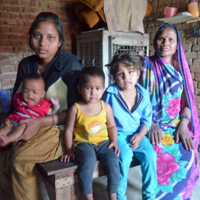
A contractor gave us an advance and brought us to Punjab. Eight other families from our village came with us. We were promised that we would get very good wages, which would allow us to save money for our daughters’ marriages, so we agreed.
However, when we began working we were told our wages wouldn’t be paid until the end of the season. We were only paid a petty amount (about 500 INR, £5) each week or two to sustain our whole family. It wasn’t enough. We said we’d leave if we weren’t paid properly.
Our contractor then said we could only leave if we paid back the advance, which had already increased from the original amount because we now discovered we had to pay for housing, water, electricity and transport in addition to repaying the advance, and the interest too.
The debt just kept increasing. We wanted to see the wage records to see how much we were earning each day, and how much of the debt we were paying off, but we weren’t allowed.
As told to Anti-Slavery International









